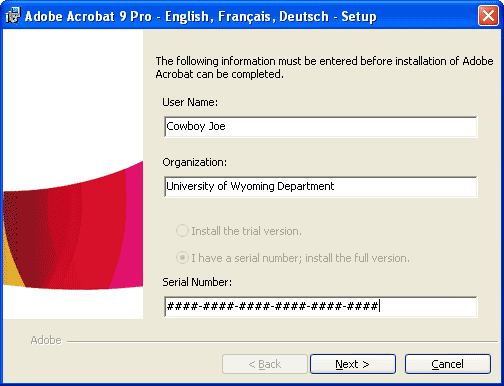Assuming you have this, there are two ways you can build your delete. If your driving column is unique for each group, but may have duplicates elsewhere in the table, you'll need a correlated delete. Insert dates fall into this category. In contrast, if the defining column is unique across the whole table, you can use an uncorrelated delete. Let's remove duplicate rows from table. Following ways can be used to delete duplicate records from table. Here assume that ID column should be unique after deleting. Now we see how to delete the duplicate records from the DupTest table in different ways. Well, if by 'duplicate records' you mean that all of the column values in each row are the same, you could 'select them out' using the rownumber function. For example: SQL create table xxx (a1 varchar2(1), b2 varchar2(1), c3 varchar2(1)); Table created. SELECT. FROM (SELECT f., COUNT (.) OVER (PARTITION BY fruitname, color) c FROM fruits f) WHERE c 1; Now, you should know how to how to find duplicate records in Oracle Database. It's time to clean up your data by removing the duplicate records. Was this tutorial helpful?
Finding duplicates with RANK
If you've made the mistake of forgetting a primary key on your table, it can be frustrating to find a way to delete all of the duplicate rows without deleting the initial instances.
This query selects all of the ‘extra' rowids and removes them. It is especially designed for limiting the query scans to only those records which have duplicates, which is useful if there's only a subset of the table that you are dealing with. If you want to improve its efficiency for a table with a high percentage of duplicates, simply remove the inside where clause. In a sample test with 1% duplicates and 233 000 rows, the query took 22 seconds without the subquery, and 18 seconds with it.
* NOTE: This query may not work in Oracle versions before 8i.
A quick way to create duplicates:

create table $temp_table as select * from $table_name sample(10);
insert into $table_name select * from $temp_table;
Alternative methods
GROUP BY method
Join with self method
Comparison
In the test case, I used a table with 233 000 rows created with a 1% duplication factor. You'll notice that I interrupted the execution of the ‘join with self' because I didn't have the patience to let it run to completion.

create table $temp_table as select * from $table_name sample(10);
insert into $table_name select * from $temp_table;
Alternative methods
GROUP BY method
Join with self method
Comparison
In the test case, I used a table with 233 000 rows created with a 1% duplication factor. You'll notice that I interrupted the execution of the ‘join with self' because I didn't have the patience to let it run to completion.
The following is a TKPROF output of the queries:
Interested in working with Tim? Schedule a tech call.
- Related Questions & Answers
- Selected Reading
Problem Statement:
You want to find and remove duplicates from a table in Oracle.
Solution: We can use Oracle's internal ROWID value for uniquely identifying rows in a table. The sample syntax to acheive this would like below. 2 chainz ft lil wayne no worries free mp3 downloader.
To demonstrate the usage, we will begin by creating sample data.
Example
Looking at the data we just created.
Example
| player_rank | player_name |
| 4 | ANDY MURRAY |
| 3 | NOVAK DJOKOVIC |
| 3 | NOVAK DJOKOVIC |
| 2 | RAFAEL NADAL |
| 2 | RAFAEL NADAL |
| 1 | ROGER FEDERER |
| 1 | ROGER FEDERER |
So, we have inserted 3 duplciates which we wanted to remove. before we go on and write a Delete statement, let us understand the inner query with ROWID.
How To Delete The Duplicates In Oracle Table
Example
I had intentionally added the columns player_rank and player_name to this innermost subquery to make the logic understandable. Ideally, innermost subquery could be written without them to the same effect. If we execute just this innermost query offcourse with the extra columns selected for clarity, we see these results.
| player_rank | player_name | rowid | rnk |
| 4 | ANDY MURRAY | AAAPHcAAAAAB/4TAAD | 1 |
| 3 | NOVAK DJOKOVIC | AAAPHcAAAAAB/4TAAC | 1 |
| 3 | NOVAK DJOKOVIC | AAAPHcAAAAAB/4TAAG | 2 |
| 2 | RAFAEL NADAL | AAAPHcAAAAAB/4TAAB | 1 |
| 2 | RAFAEL NADAL | AAAPHcAAAAAB/4TAAF | 2 |
| 1 | ROGER FEDERER | AAAPHcAAAAAB/4TAAE | 1 |
| 1 | ROGER FEDERER | AAAPHcAAAAAB/4TAAA | 2 |
The SQL returns the rowid for all the rows in the table. The ROW_NUMBER() function then works over sets of id and player_name driven by the PARTITION BY instruction. This means that for every unique player_rank and player_name, ROW_NUMBER will start a running count of rows we have aliased as rnk. When a new player_rank and player_name combination is observed, the rnk counter resets to 1.
Now we can apply the DELETE operator to remove the duplicate values as below.
SQL: Remove duplicates
Example
Output
How To Delete Duplicates In Oracle Sql
| player_rank | player_name |
| 4 | ANDY MURRAY |
| 3 | NOVAK DJOKOVIC |
| 2 | RAFAEL NADAL |
| 1 | ROGER FEDERER |

